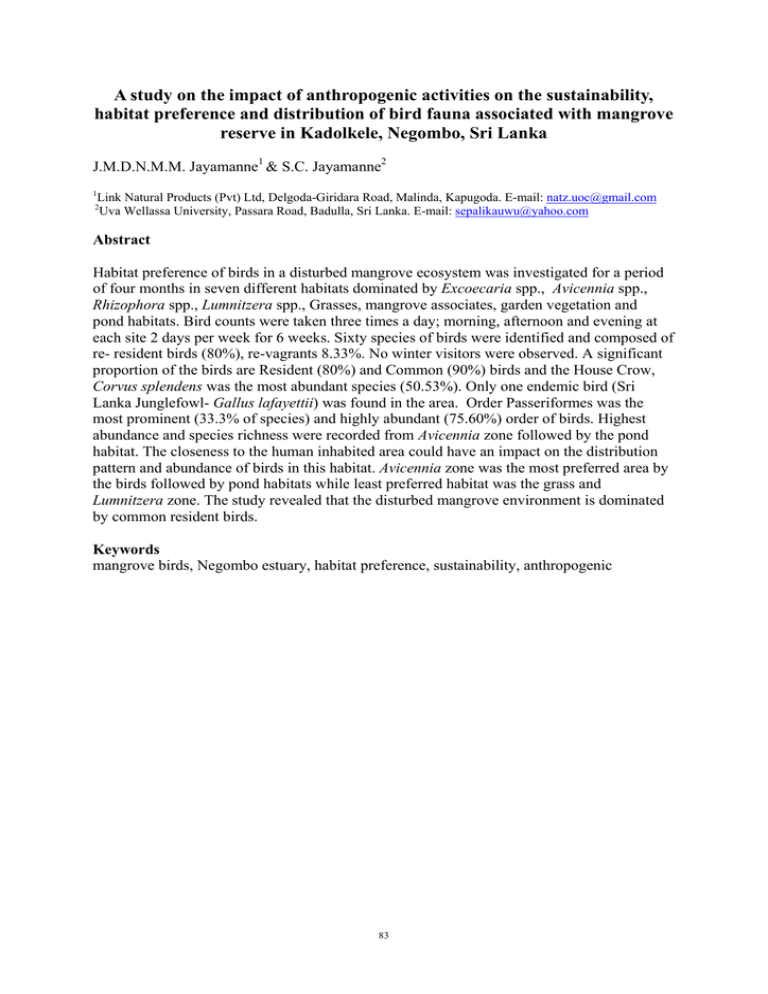A study on the impact of anthropogenic activities on the... habitat preference and distribution of bird fauna associated with mangrove
advertisement

A study on the impact of anthropogenic activities on the sustainability, habitat preference and distribution of bird fauna associated with mangrove reserve in Kadolkele, Negombo, Sri Lanka J.M.D.N.M.M. Jayamanne1 & S.C. Jayamanne2 1 Link Natural Products (Pvt) Ltd, Delgoda-Giridara Road, Malinda, Kapugoda. E-mail: natz.uoc@gmail.com Uva Wellassa University, Passara Road, Badulla, Sri Lanka. E-mail: sepalikauwu@yahoo.com 2 Abstract Habitat preference of birds in a disturbed mangrove ecosystem was investigated for a period of four months in seven different habitats dominated by Excoecaria spp., Avicennia spp., Rhizophora spp., Lumnitzera spp., Grasses, mangrove associates, garden vegetation and pond habitats. Bird counts were taken three times a day; morning, afternoon and evening at each site 2 days per week for 6 weeks. Sixty species of birds were identified and composed of re- resident birds (80%), re-vagrants 8.33%. No winter visitors were observed. A significant proportion of the birds are Resident (80%) and Common (90%) birds and the House Crow, Corvus splendens was the most abundant species (50.53%). Only one endemic bird (Sri Lanka Junglefowl- Gallus lafayettii) was found in the area. Order Passeriformes was the most prominent (33.3% of species) and highly abundant (75.60%) order of birds. Highest abundance and species richness were recorded from Avicennia zone followed by the pond habitat. The closeness to the human inhabited area could have an impact on the distribution pattern and abundance of birds in this habitat. Avicennia zone was the most preferred area by the birds followed by pond habitats while least preferred habitat was the grass and Lumnitzera zone. The study revealed that the disturbed mangrove environment is dominated by common resident birds. Keywords mangrove birds, Negombo estuary, habitat preference, sustainability, anthropogenic 83




